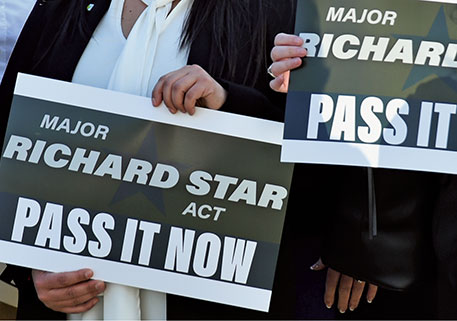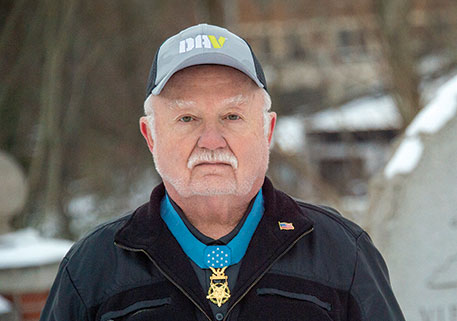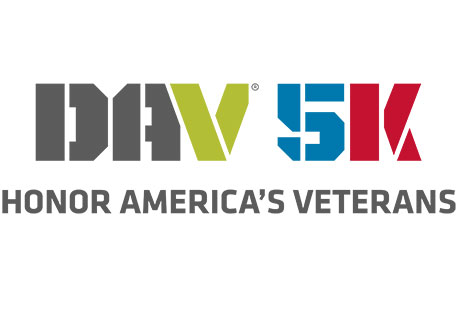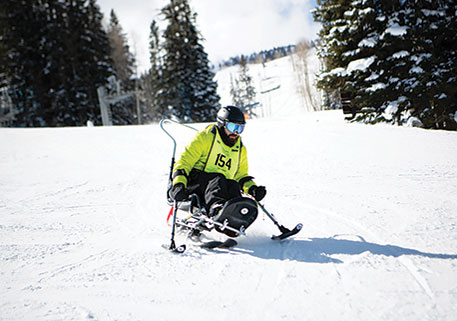Every year leading up to DAV’s 100th anniversary in 2020, the September/October issue of DAV Magazine will chronicle a decade in our organization’s history. This year’s installment provides some historical background and highlights of important issues and events that affected disabled veterans and their families during the 1990s.
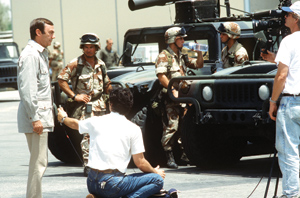
In 1990, Americans were clamoring to theaters to see “Home Alone” and “Pretty Woman,” purchasing Madonna and MC Hammer albums, and tuning in to the first season of “The Simpsons.”
Seemingly a world away, Saddam Hussein, then the president of Iraq, invaded smaller, oil-rich neighbor Kuwait and set in motion a chain of events that would define the last decade of the 20th century and impact the United States—and the rest of the world—through the present day.
The United Nations placed economic sanctions against Iraq, and 34 partner nations joined forces to support Kuwait, forming the largest military alliance since World War II. U.S. involvement in the Gulf War began with the initial invasion Aug. 2, followed by a buildup of nearly 700,000 American military personnel, called Operation Desert Shield.
Less than a half-year later, in January 1991, Operation Desert Storm commenced. An air strike campaign began, followed by troops on the ground in February. Meanwhile, the American public followed the first heavily televised war with help of new technologies such as satellite broadcasting. From their living rooms, people all around the globe viewed missiles hitting targets and planes taking off from aircraft carriers.
A cease-fire was declared Feb. 28, the day after coalition troops reached Kuwait City. The conflict lasted less than two months.
“Tonight in Iraq, Saddam walks amidst ruin. His war machine is crushed. His ability to threaten mass destruction is itself destroyed,” said then-President George H.W. Bush, a World War II veteran, in an address to Congress.
The campaign was considered an overall success, but there were still the physical costs of war: 147 combat deaths, 145 noncombat deaths and one service member reported missing in action. Another 467 were wounded in action, and thousands since then have been diagnosed with Gulf War illness, a cluster of medically unexplained chronic symptoms that can include fatigue, headaches, joint pain, indigestion, insomnia, dizziness, respiratory disorders and memory problems. Following the conclusion of the Gulf War, DAV pressed for the VA to expand the list of illnesses that would enable Gulf War veterans to receive health care and benefits.
Despite the costs associated with caring for the recently ill and injured Gulf War veterans, along with an aging veteran population in general, Congress and the administration constrained VA spending in the 1990s. DAV fought for adequate funding of VA health care and benefits, ensuring the nation was keeping its promise to the men and women who served.
“[Disabled veterans] may be the consequences of war, but they are also now the pride of America,” said then-Secretary of Veterans Affairs Jesse Brown, who previously served as DAV Washington Headquarters executive director. “And the DAV will not let them down.”
“The men and women who served during Operations Desert Storm and Desert Shield answered the call to service during tumultuous times without hesitation,” said DAV National Adjutant Marc Burgess, a Gulf War veteran. “Although the conflict ended 26 years ago, the impact of service can last long after leaving the battlefield. Just as we did as they first returned in 1991, DAV will continue to support the brave men and women who served and sacrificed during the Gulf War.”
In 1993, as DAV membership grew, concerns with leadership and the direction of the organization surfaced. With DAV’s reputation on the decline following a scandal and financial mismanagement, DAV staff and members were at a crossroads. At the 1993 national convention, Dick Marbes of Wisconsin was elected national commander. He appointed Denvel “Dale” Adams, who had served as national adjutant before the decline, back to his previous post. By the end of the decade, Art Wilson had assumed the reigns, and DAV returned to the upward trajectory that has continued through today.
Military women in the ’90s
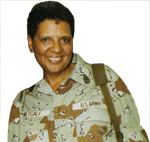 Newly elected National Commander Delphine Metcalf-Foster served during the Gulf War. An Army-trained combat medic, Metcalf-Foster was assigned to the graves registration unit in Saudi Arabia.
Newly elected National Commander Delphine Metcalf-Foster served during the Gulf War. An Army-trained combat medic, Metcalf-Foster was assigned to the graves registration unit in Saudi Arabia.
Like many reservists serving at that time, Metcalf-Foster was recalled to active duty. She was one of more than 40,000 servicewomen deployed to Southwest Asia during Operations Desert Shield and Desert Storm. In 1990, women only made up 11 percent of active-duty military personnel, 13 percent of the Reserve forces and had limited job opportunities based on gender. But that was about to change. Media covered women at war working side by side with their male colleagues, often in command roles. The Gulf War proved that servicewomen risked their lives just as their male counterparts did, regardless of being assigned to noncombat positions. Thirteen servicewomen were killed and two became prisoners of war.
As a result of the Gulf War, women made strides in breaking down the gender barriers in the military. Combat aviation opened to women in 1991, and two years later, women could serve aboard combat ships.
Honoring Secretary Jesse Brown
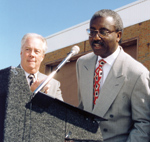 From 1993 to 1997, former DAV Executive Director Jesse Brown (right) served as the second secretary of veterans affairs. During his tenure, Brown expanded VA services offered to female veterans, homeless veterans and veterans who became ill due to chemical exposures in Vietnam or the Gulf War. A Marine Corps veteran, Brown was committed to giving back to his brothers- and sisters-in-arms.
From 1993 to 1997, former DAV Executive Director Jesse Brown (right) served as the second secretary of veterans affairs. During his tenure, Brown expanded VA services offered to female veterans, homeless veterans and veterans who became ill due to chemical exposures in Vietnam or the Gulf War. A Marine Corps veteran, Brown was committed to giving back to his brothers- and sisters-in-arms.
“No one has ever been placed at the helm of the VA who knew more about the programs he was asked to manage than Jesse Brown. And no one has ever brought to the job a greater sense of compassion for the men and women who have served in our armed forces. I view Jesse Brown’s appointment as a watershed moment in the history of veterans affairs,” said Arthur H. Wilson (left), who was DAV’s national service director at the time of Brown’s appointment. Wilson was appointed DAV national adjutant in 1994 and served in that role until his retirement in 2013.


